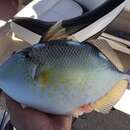Diagnostic Description
provided by Fishbase
Scales enlarged above the pectoral fin base and just behind the gill slit to form a flexible tympanum; scales of posterior body with prominent keels, forming longitudinal ridges. A prominent groove in the skin extending anteriorly from front of eye for a distance of about 1 eye diameter. Caudal peduncle depressed. Caudal fin rays of adults prolonged above and below.
Life Cycle
provided by Fishbase
Oviparous, distinct pairing during breeding (Ref. 205).
Migration
provided by Fishbase
Amphidromous. Refers to fishes that regularly migrate between freshwater and the sea (in both directions), but not for the purpose of breeding, as in anadromous and catadromous species. Sub-division of diadromous. Migrations should be cyclical and predictable and cover more than 100 km.Characteristic elements in amphidromy are: reproduction in fresh water, passage to sea by newly hatched larvae, a period of feeding and growing at sea usually a few months long, return to fresh water of well-grown juveniles, a further period of feeding and growing in fresh water, followed by reproduction there (Ref. 82692).
Morphology
provided by Fishbase
Dorsal spines (total): 3; Dorsal soft rays (total): 25 - 27; Analspines: 0; Analsoft rays: 24 - 26
Trophic Strategy
provided by Fishbase
Inhabit coastal areas, usually found over muddy and sandy bottoms, also around reefs, together with the sponges and algae (Ref. 5213). Feed on benthic animals (Ref. 9769).
Biology
provided by Fishbase
Inhabit coastal areas, usually found over muddy and sandy bottoms, also around reefs, together with the sponges and algae (Ref. 5213). Adults on deep coastal slopes and usually seen swimming high above the bottom, sometimes found in estuaries. Juveniles in sheltered coastal bays and estuaries with outcrops of rubble or debris on open substrates (Ref. 48637). Feed on benthic animals (Ref. 9769). Oviparous (Ref. 205). Also caught with vertical long-lines (Ref. 9770). Marketed fresh and dried-salted (Ref. 9770).
Importance
provided by Fishbase
fisheries: commercial; aquarium: commercial

